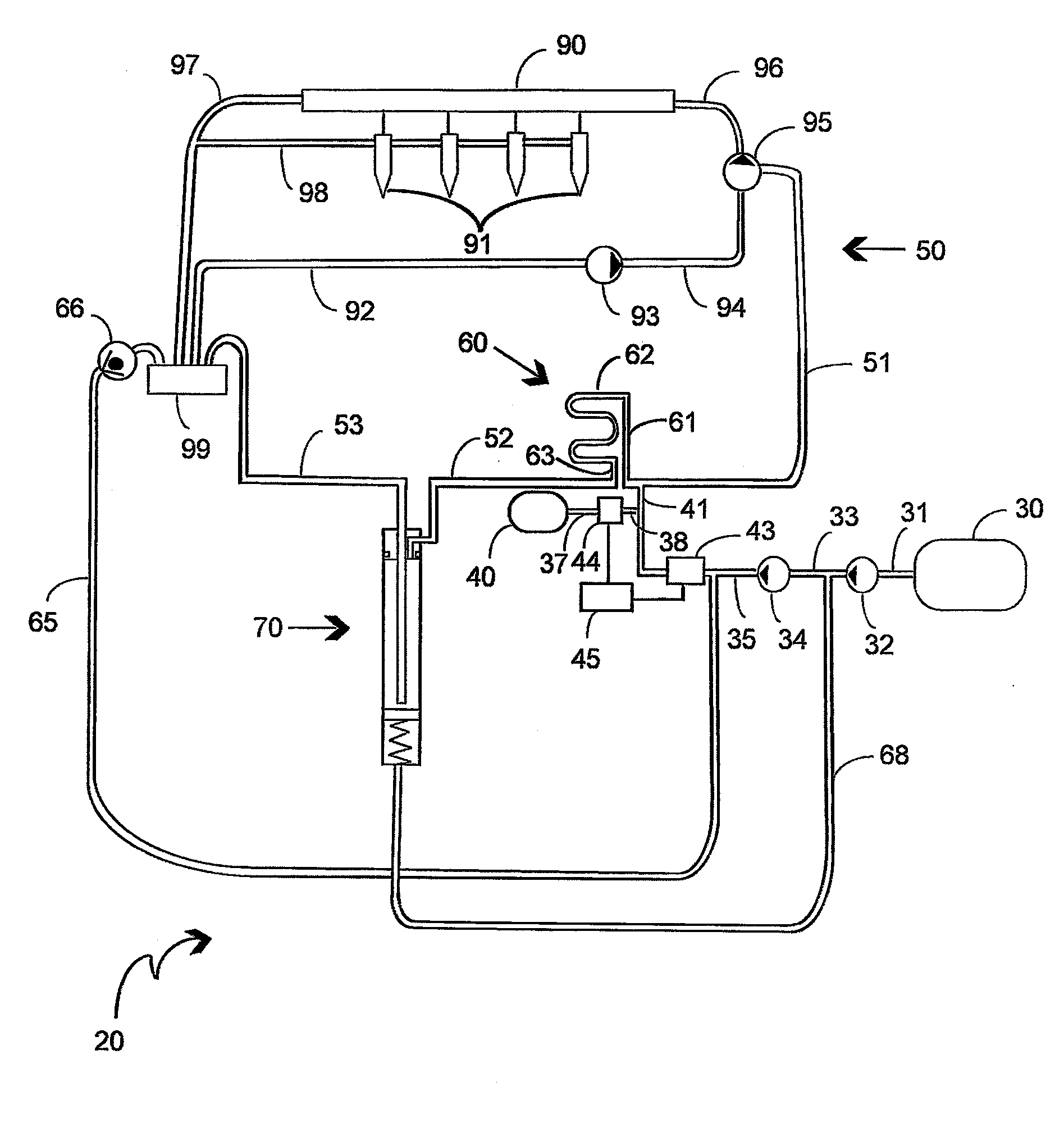Homogenizing fuel enhancement system
a fuel enhancement and homogenizing technology, applied in the field of fuel systems, can solve the problems of small improvement in actual efficiency and/or were achieved, add tremendous cost and complexity to the engine, and achieve marginal success at bes
- Summary
- Abstract
- Description
- Claims
- Application Information
AI Technical Summary
Benefits of technology
Problems solved by technology
Method used
Image
Examples
Embodiment Construction
[0068]The above described drawing figures illustrate aspects of the invention in at least one of its exemplary embodiments, which aspects are further defined in detail in the following description.
[0069]The subject of this patent application is generally an improved fuel enhancement system in various embodiments for use in connection with internal combustion engines or the like that builds on the disclosures of the above-referenced applications. Thus, while the further exemplary embodiments shown and described herein are focused on specific aspects of particularly the fuel enhancement system components relating to the mixing, circulation, and delivery of the multi-fuel mixture, here specifically in the context of common rail or mechanical injection diesel engines, it will be appreciated by those skilled in the art that the present invention is applicable to and may work in conjunction with a variety of engines, engine fuel systems, and fuels now known or later developed or discovere...
PUM
 Login to View More
Login to View More Abstract
Description
Claims
Application Information
 Login to View More
Login to View More - R&D
- Intellectual Property
- Life Sciences
- Materials
- Tech Scout
- Unparalleled Data Quality
- Higher Quality Content
- 60% Fewer Hallucinations
Browse by: Latest US Patents, China's latest patents, Technical Efficacy Thesaurus, Application Domain, Technology Topic, Popular Technical Reports.
© 2025 PatSnap. All rights reserved.Legal|Privacy policy|Modern Slavery Act Transparency Statement|Sitemap|About US| Contact US: help@patsnap.com



